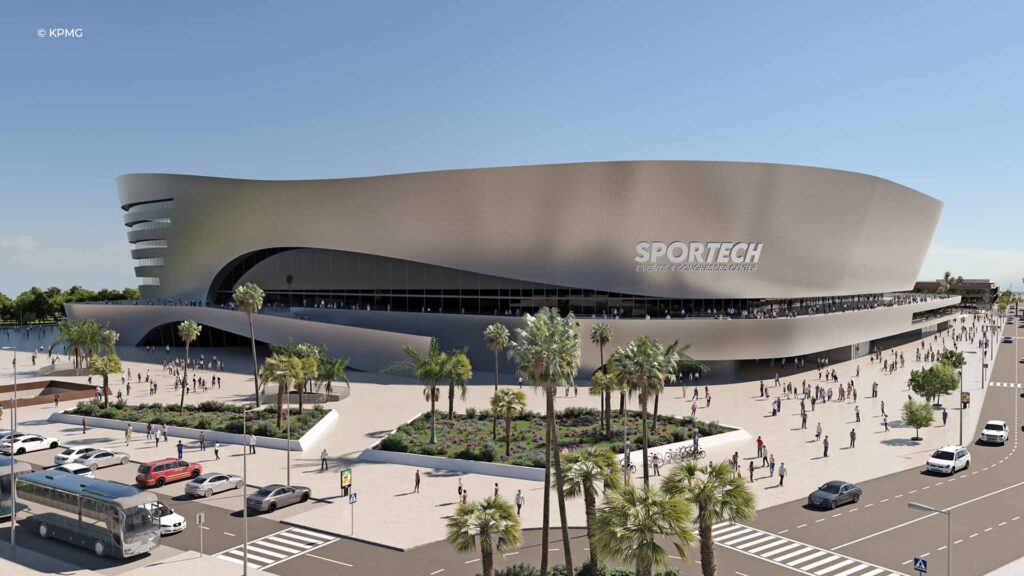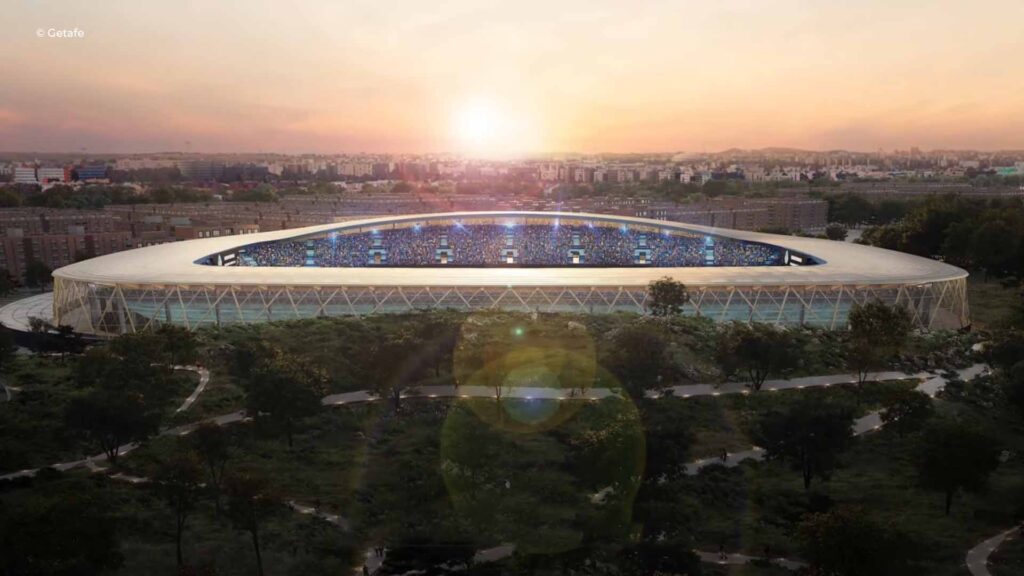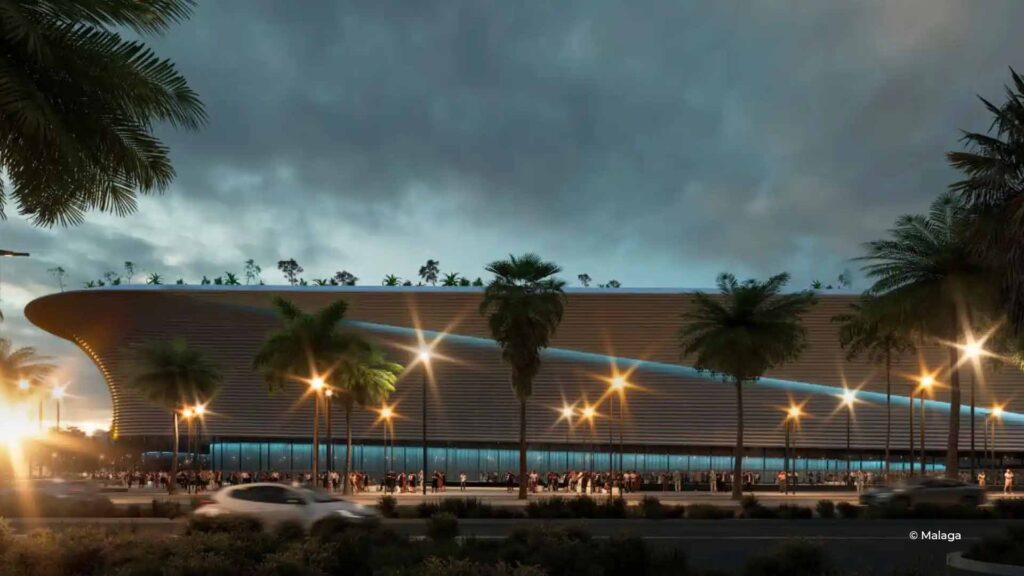There are many stadiums in Spain that have applied to host the 2030 World Cup. A dream that is still in development, but for which a series of very demanding requirements must be met, which means having everything connected when presenting the various candidacies for expected a match during the World Cup.
Estadio Gran Canaria – Las Palmas


The increase in capacity will be one of the essential changes at the Gran Canaria stadium. The initial idea is to increase its capacity from the current 33,000 seats to a target of 44,000. This is a key requirement for the 2030 World Cup, which requires at least 40,000 seats.
Some important changes for which a very high budget is required, an amount of around 80 million euros, in order for the remodeling to be successful. All this would significantly help Gran Canaria to be one of the future venues for the World Cup in Morocco, Portugal and Spain to be held in 2030.
Cadiz Sportech City – Cádiz


The Spanish club Cadiz FC has presented plans for Sportech City, where, in addition to the new stadium, there will also be training fields, business facilities and others.
The total cost of the project is expected to be around 390 million euros, the Club is expected to collect annual income between 15 and 20 million euros when the project opens. The new stadium is expected to have a capacity of 30,000 to 35,000 fans.
The start of construction is expected to start in 2025
Estadio Coliseum – Getafe


Getafe have announced that they will try and renovate the Coliseum Alfonso Perez, as well as their training ground.Provided that gets given the go ahead, work will start in March or April of 2025. The training ground is to be renovated, and there will be a smaller 2,000-seater stadium there.
Meanwhile the Coliseum itself will not change capacity, but instead be renovated and have a roof put over the entire stadium. They will not move grounds while the work is ongoing, but instead the work will take place in stages, starting with the North stand.
The work has been given a period of 27 months to be completed, meaning by summer of 2027, all work should be finished.
La Romareda – Zaragoza


The city of Zaragoza is expected to be among the host cities of the 2023 world cup, and for this reason they will build a new stadium with about 43,000 seats.
The entire project is expected to cost around 150 million euros, the Government of Aragon and Real Zaragoza, is to have the football field ready at the end of 2027, in time to host matches for the 2030 World Cup. Fifa will decide if this city is one of the competing venues.
La Rosaleda Stadium – Málaga


La Nueva Rosaleda should be ready for the 2030 World Cup and Málaga are fighting hard to get their head in and take their place in an event
that will be historic for Spanish football.La Nueva Rosaleda, a 130 million euro project that will be built in three years and whose works are scheduled to start in 2025 and end in 2028.
Estadio Riazor – A Coruña


The renovation project of the new Riazor stadium has a capacity of 45,000 seats, the works of which would cost 63 million euros. The project has been modified several times to increase the seats to 48,000 to meet FIFA’s requirements more comfortably. The date for the start of the works has not been made clear yet.
Ramon Sanchez-Pizjuan Stadium – Seville


The Sevilla stadium renovation project was announced at a shareholder meeting in early December 2023 and work is now scheduled to begin in 2026 .
The North Stand will become a huge single-tier stand with 15,000 seats. There is no stand like this in Spain. It will be similar to that at the Tottenham Hotspur Stadium and Borussia Dortmund’s Signal Iduna Park.
The new stadium will be sustainable with renewable energy. Wit that, Sevilla will make great strides towards having a green stadium, something that is becoming revolutionary in stadium constructions today as more clubs strive to have sustainable renewable energy soucrces.
A new car park will be added, which means there will lots of parking spaces in the future to accommodate hundreds if not thousands of cars.
Terraces, restaurant areas and more hospitality areas to be added.
Capacity will increase from 42,000 to 55,000. While this will not be any closer to Spain’s or even Europe’s top clubs with huge stadium capacities, it would be a great addition to help accommodate Sevilla’s growing fanbase.
Estadio Benito Villamarín – Seville


The new Benito Villamarín Stadium will have capacity for 60,000 spectators. The current West Stand will be demolished and rebuilt, with capacity for 16,000 seats.
The other three stands will not be demolished, but they will undergo substantial changes that will have an impact on the comfort and fan experience.
The project also includes the installation of a roof over the four stands and a new façade that will radically change the current look with an architectural proposal that will surround the Stadium with the thirteen stripes of the badge.
The new infrastructure that Real Betis is working will cost approximately €60 million.
Spotify Camp Nou – Barcelona


Barcelona, which has started work on the construction of the new Camp Nou for a year, the project of more than 1 billion euros has started at a fast pace and the Club hopes to partially open the stadium at the end of the year.
Spotify Camp Nou is expected to be among the main stadiums of the 2030 World Cup, and the Catalans are lobbying hard for their stadium to host the big final of the 2030 World Cup in the competition with the Bernabeu.
The New Tenerife Stadium – Tenerife



The New Tenerife Stadium, designed in 2023 by MANICA + Palenzuela Arq, is set to become a modern football venue with a planned capacity of 35,000 seats. This state-of-the-art project aims to provide CD Tenerife and its supporters with a world-class home, featuring cutting-edge facilities, enhanced fan experience areas, and a contemporary architectural design that blends seamlessly with the island’s landscape.
However, the project is currently awaiting financing, which is closely tied to the club’s anticipated sale and overall financial stability. Once funding is secured, the new stadium is expected to elevate the matchday experience, boost the club’s revenue streams, and strengthen Tenerife’s presence in Spanish football. Fans eagerly await further developments as the dream of a new, modern home for CD Tenerife moves closer to reality.
Nou Mestalla – Valencia


Valencia CF has officially resumed construction of the long-awaited Nou Mestalla, after work was suspended in 2009 due to financial difficulties. With a renewed vision and commitment, the club now aims to complete the stadium by 2027, marking a new era for both the team and its supporters.
The Nou Mestalla is set to become a symbol of pride, modernity, and innovation, not just for Valencia CF but for the entire city. Designed to be one of the most advanced football venues in Europe, the stadium will feature state-of-the-art infrastructure, sustainable energy solutions, and an immersive fan experience.
Beyond football, the new stadium will serve as a multi-purpose hub for sport, leisure, and entertainment—operating 365 days a year. With modern hospitality areas, event spaces, and a design that embraces both tradition and the future, Nou Mestalla is poised to redefine football culture in Valencia.
As construction progresses, fans eagerly anticipate the long-overdue completion of a stadium that was once a distant dream—but is now on track to become a reality. The countdown to 2027 has begun!














